




9
rewilding areas working on restoring the circle of life.
4
species of vultures found in Europe (griffon, cinereous, Egyptian and bearded), with three of these species found in five of Rewilding Europe’s operational areas.
6
species of large carnivores present in our areas (brown bear, grey wolf, Eurasian lynx, Iberian lynx, wolverine, golden jackal).
7
species of wild/semi-wild herbivores reintroduced or restocked in our operational areas, comprising European bison, water buffalo, Tauros, primitive horses, kulan, red deer and fallow deer.
Every day, across Europe, the Circle of Life rotates in infinite complexity. Herbivores, which feed on vegetation, are preyed on by carnivores. Sometimes they simply die of old age or disease. Their carcasses are also consumed by scavengers, such as vultures, foxes and an array of insects, which are, in turn, part of intricate local food webs. Eventually, aided by the action of myriad microorganisms and fungi, the decomposition of once living flesh means nutrients are returned to the soil, which then help new plants to grow.
Yet in most parts of Europe, the impact of man on the natural landscape means this Circle of Life is broken or degraded, with one or more of its major ecological elements missing. Efforts to restore and strengthen the circle, and support populations of European scavengers such as vultures, therefore rely on close cooperation and collaboration between a diverse range of partners across the continent.
Rewilding Europe has been working to restore the Circle of Life across Europe for most of the last decade, with wild herbivores such as Tauros, horses, kulan, bison, red deer and fallow deer (re)introduced across many of our operational areas. As these animals become increasingly integrated into local food webs, they are boosting the availability of carrion for local scavengers, such as vultures, wolves, golden and white-tailed eagles, and wild boar.
We are also directly supporting vulture populations in several areas, through measures such as artificial feeding stations, anti-poisoning patrols, heightening the visiblity of power lines, GPS tagging, promoting coexistence, and (soon) direct reintroduction.
Large carnivores, which frequently scavenge, are also an essential part of the Circle of Life – Rewilding Europe supports carnivore species in several of its operational areas through a wide variety of measures to promote coexistence. Going forwards, Rewilding Europe will continue to lead the way as we work to enhance food webs and trophic complexity across the continent.


Disgusting yet fascinating. Endangered yet hugely beneficial. Clumsy on land yet possessed of an unrivalled aerial grace. On the face of it, vultures aren’t the most endearing birds. But closer investigation reveals just how amazing vultures they really are, and why their conservation is so important.
Two centuries ago, Europe’s four vulture species – the Egyptian, bearded, cinereous (black) and griffon vulture – were among the most common breeding birds in central and southern Europe. Yet a decreasing availability of food, coupled with habitat loss, persecution and poisoning, saw vultures disappear from most European countries. At their lowest point, in the 1960s, there were only 2,000 pairs of griffon vultures and 200 pairs of cinereous vultures left in Spain (where there are now 37,000 griffon vultures and 2500 cinereous vultures).
Nevertheless, continued support is critical – the birds still face multiple threats, with the isolated nature of many breeding populations and low productivity rate of the species making the challenge of ensuring their long-term survival even greater. Thanks to reintroductions and species protection, European vulture populations are now slowly but steadily recovering.
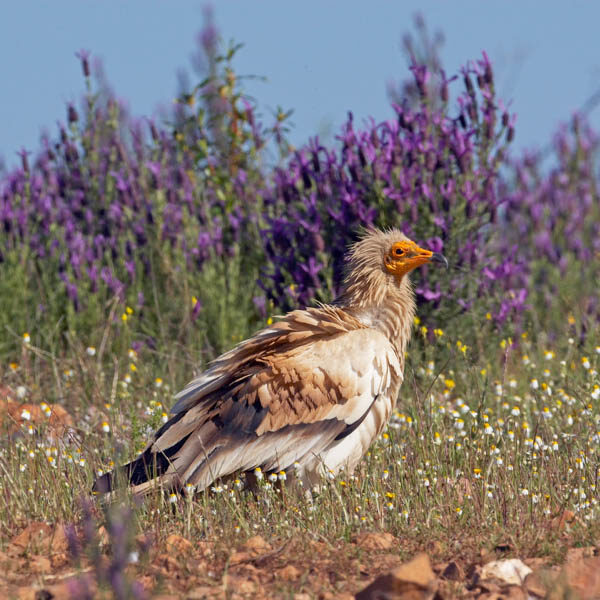
Egyptian vulture
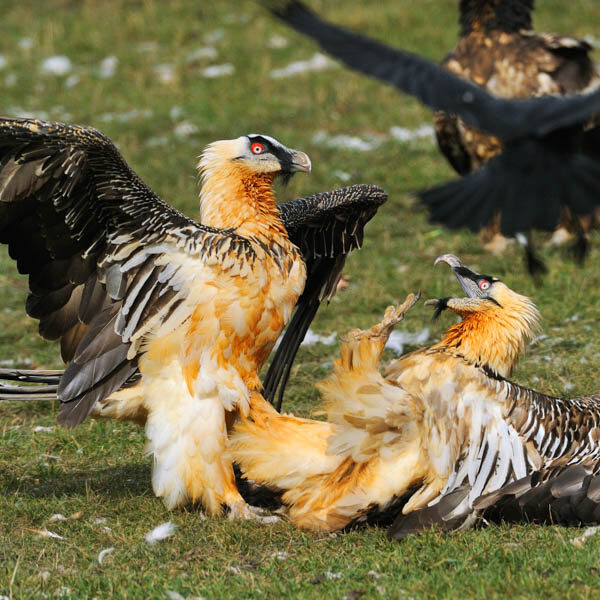
Bearded vulture
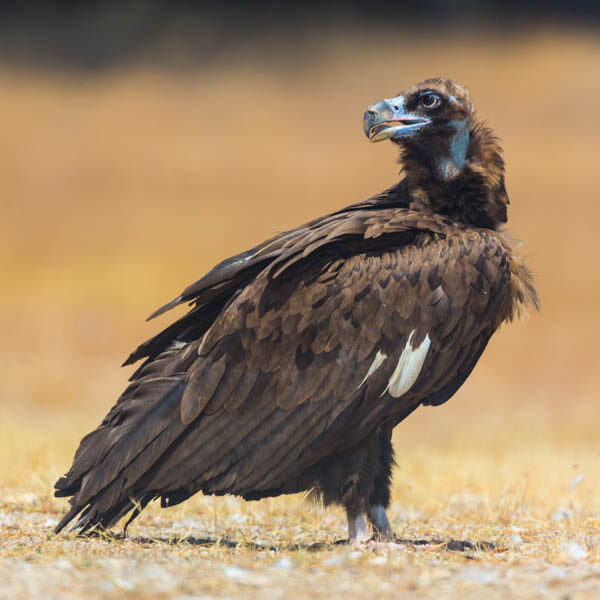
Cinereous vulture
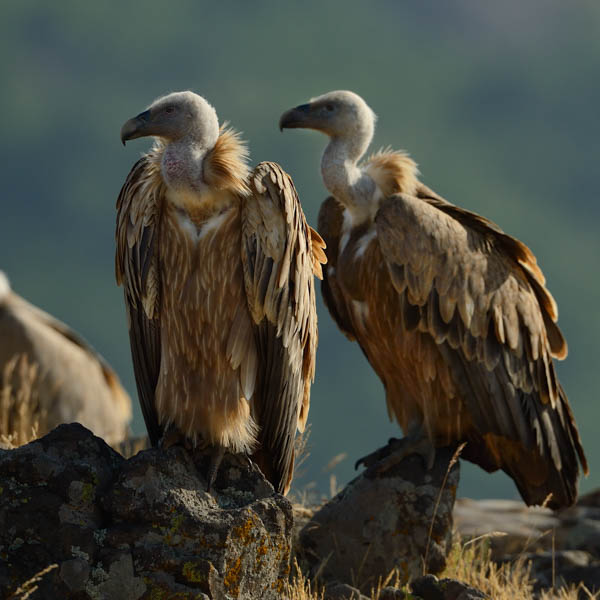
Griffon vulture
Two of Rewilding Europe’s operational areas are home to significant vulture populations: the Rhodope Mountains in southern Bulgaria, and the Greater Côa Valley in northern Portugal. In both locations, rewilding has had an encouragingly positive impact on vulture numbers over the last 10 years.
26
An increase of 26 griffon vulture pairs in the Bulgarian and Greek parts of the Eastern Rhodopes (2016–2021).
450
fallow deer and 130 red deer are now roaming the area after multiple reintroductions.
308
juveniles have fledged in the Bulgarian part of the Eastern Rhodopes.
150+
patrols and searches conducted by Bulgaria’s first anti-poisoning dog unit, detecting 40 illegally poisoned animals and 10 poison baits.
Straddling the border between Bulgaria and Greece, the eastern part of the Rhodope Mountains represents the last stronghold of Balkan vultures. It is one of Europe’s last biodiversity hotspots and a vital breeding area for griffon and globally threatened Egyptian vultures. Across the border in Greece, the same mountain range is also home to the last remaining breeding colony of cinereous vultures in southeast Europe.
With support from the European Union’s LIFE programme, the last five years have seen the Rewilding Rhodopes team, in collaboration with Bulgarian and Greek partners, take significant steps forward in stabilising and growing vulture populations in the Rhodopes. The tagging of both cinereous and griffon vultures with GPS transmitters has been critical, giving the local rewilding team and partners groundbreaking insight into the movement of vulture populations, the various threats that they face, and the best ways to support the birds’ comeback.
Under the framework of the LIFE Vultures initiative, the number of griffon vulture pairs in the area increased from 91 in 2016 to 117 in 2021, while 308 juveniles have fledged in the Bulgarian part of the Eastern Rhodopes over the last five years.
The population increase has been underpinned by a wide range of measures, carried out by the rewilding team and local partners. These have mainly involved reducing mortality from poaching, poisoning and collisions with power lines, which are all still negatively impacting vulture populations in the area.
In particular, critical to the positive impact of rewilding measures in the Rhodopes has been the reintroduction and restocking of red and fallow deer, which has boosted the availability of natural food for vultures, other scavengers, and predators, and thereby helped to restore food webs and biodiversity.
Between 2016 and 2021, 50 red deer were released by the Rewilding Rhodopes team in two areas in the Eastern Rhodopes, establishing a viable and naturally increasing population. At the same time, nearly 400 fallow deer were released in three different areas. This represents the largest ever reintroduction of deer in Bulgaria.
“These efforts have already proven successful in terms of enhancing local food chains,” says Rewilding Rhodopes rewilding officer Stefan Avramov. “The griffon vultures which breed in the area regularly feed on the carcasses of deer following predation by wolves. With populations of deer increasing every year, through both restocking and natural growth, we hope to see more evidence of vultures scavenging on deer carcasses.”
“These efforts have already proven successful in terms of enhancing local food chains. The griffon vultures which breed in the area regularly feed on the carcasses of deer following predation by wolves.”
Looking to the future, the Rewilding Rhodopes team and their partners will continue their efforts to maintain and grow vulture populations in both Bulgaria and Greece, with a wide range of measures including the reintroduction of cinereous vultures in the Bulgarian Rhodopes in 2021 or 2022. The overall aim is to enable both species to recolonise parts of their former range.
“To date, rewilding efforts have helped to increase the griffon vulture population in the Rhodope Mountains and decrease threats to all local vulture species and other wildlife,” says Deli Saavedra, Rewilding Europe’s Head of Landscapes. “This has created a solid base for upscaling rewilding in the area. The next step will be to bring back the endangered cinereous vulture in Bulgaria and to continue boosting deer densities through reintroductions.”
“The next step will be to bring back the endangered cinereous vulture in Bulgaria and to continue boosting deer densities through reintroductions.”
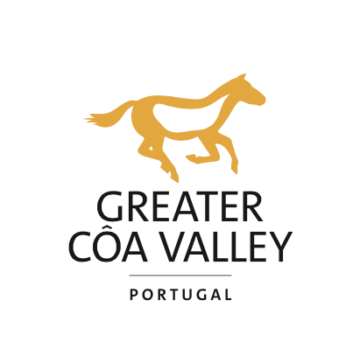 The Portuguese perspective
The Portuguese perspectiveLocated in northern Portugal, the Greater Côa Valley rewilding area is home to populations of Egyptian, cinereous and griffon vultures. Supported by rewilding measures, the last two decades have seen the area witness a spectacular comeback by the latter. This ongoing trend, together with the stabilisation of the area’s Egyptian vulture population, highlights the rewilding potential of this beautiful area and offers encouragement to the local rewilding team now engaged in efforts to restore wild nature here.
Portuguese NGO Associação Transumância e Natureza (ATNatureza), one of Rewilding Europe’s partners in the Greater Côa Valley rewilding area, has been closely monitoring the populations of raptor species in the 850-hectare Faia Brava Nature Reserve and 20,630-hectare Côa Valley Special Protection Area (SPA) since 2000. The SPA, which was created in 1999, wholly contains the reserve, which was created in 2000. During the 1990s there were fewer than 10 nesting pairs of griffon vultures in the SPA – by 2015, with Faia Brava acting as a core area, that number had reached 74, with around 60 couples located inside the reserve.
In Europe today, wild carcasses have become a rare commodity. Wilderness has become arable land, populations of wild grazers are often managed at low densities, and legislation demands the immediate removal of dead livestock. As a result, much of the biological “waste” has disappeared from the European ecosystem and is no longer part of the natural cycle of life.
Rewilding Europe, together with partners, wants to help Europe’s scavengers by encouraging a fresh look at how herbivore carcasses are managed across the continent. A brochure developed together with Dutch NGO ARK Nature in 2017 provides a practical overview of the possibilities for restoring the Circle of Life, addressing relevant stakeholders such as those managing nature, fauna and roads.
ARK Nature has played a pioneering role in promoting and restoring the Circle of Life for many years. Their Circle of Life initiative, which aims to increase the availability of carrion in nature, began life as a groundbreaking way of helping endangered scavengers in the Netherlands. Their YouTube channel features a spectacular range of videos showing scavengers feeding on carcasses.
Thanks to reintroductions and species protection, many European vulture populations are gradually recovering. Since the 1970s, so-called supplementary feeding stations (so-called “vulture restaurants”) have been set up in southern Europe to ensure these populations have an adequate supply of carrion. Rewilding Europe itself operates feeding stations in both the Rhodope Mountains of Bulgaria and the Greater Côa Valley in northern Portugal.
As part of the LIFE Vultures initiative in the Rhodopes, 571 feedings were organised by the Rewilding Rhodopes team between 2016 and 2021. A network of five feeding places was established in the remote Kompsatos valley, supported by 13 local livestock breeders (more details in the LIFE Vultures Layman’s Report).
As a means to an end, these so-called “vulture restaurants” are useful. Yet they still interfere with nature and cannot completely replace natural, randomly available carrion that would otherwise support a far more diverse range of species. In an ideal world, scavengers are entirely supported by natural prey and carcasses, which is why Rewilding Europe is working hard to boost wild herbivore populations in many of its operational areas (and supporting and encouraging other rewilding initiatives).
Effective management, from a Circle of Life perspective, often means doing nothing and simply letting nature take its course. Leaving carcasses where they are, instead of removing them, provides food for the numerous scavenger species that currently face a dearth of carrion. This is where efforts to amend relevant European policy, and to ensure such policy results in real change on the ground, are critical.
Over the last decade, Rewilding Europe’s policy work in this regard covers two key areas. The first relates to the status of herbivores that are reintroduced into the wild as a result of rewilding initiatives. In the vast majority of European countries, these animals are still not recognised as wild, which has implications for the way they are managed, including the disposal of their carcasses.
In the Rhodope Mountains, for example, the local rewilding team and local partners have been working hard to have the area’s growing herd of reintroduced Konik horses legally recognised as wild animals. Their efforts, which have not yet been successful, were beautifully captured in a short documentary titled “Status Wild“.
The situation in Rewilding Europe’s Danube Delta rewilding area offers hope, however. Konik horses, which were released onto Ermakov Island in the Ukrainian part of the rewilding area in 2019 and 2020, have already been granted the status of wild animals by the Danube Biosphere Reserve.
“This was the result of our work and the history of the area,” explains Deli Saavedra, Rewilding Europe’s Head of Landscapes. “The animals are now considered wild and will be allowed to breed and migrate naturally – there is no obligation to round them up. And if there is any predation, or a horse dies naturally, the carcass will remain in nature to benefit local scavengers. We will continue our efforts to push for a similar approach in other countries.”
“If there is any predation, or a horse dies naturally, the carcass will remain in nature to benefit local scavengers. We will continue our efforts to push for a similar approach in other countries.”
A second focus is on lobbying for leaving carcasses. In 2001, following the widespread outbreak of BSE (“mad cow disease”) in Europe, the European Union prohibited the abandonment of livestock carcasses in fields. This had a hugely negative impact on vulture populations, which had come to rely on such carcasses in the absence of wild herbivores, as well as a wide range of other vertebrate and invertebrate scavenging species, plants and the soil.
Subsequent relaxation of EU legislation allowed such carcasses to once again be left in nature (under special conditions), but not all European countries immediately chose to implement this change. Until 2018 (when Portuguese legislation was finally changed), this meant that farmers were leaving carcasses in large swathes of the Spanish countryside, yet their Portuguese counterparts were still removing them. This disparity was graphically highlighted in research showing GPS-tracked griffon and Egyptian vultures on the Iberian Peninsula almost exclusively shunning Portuguese territory.
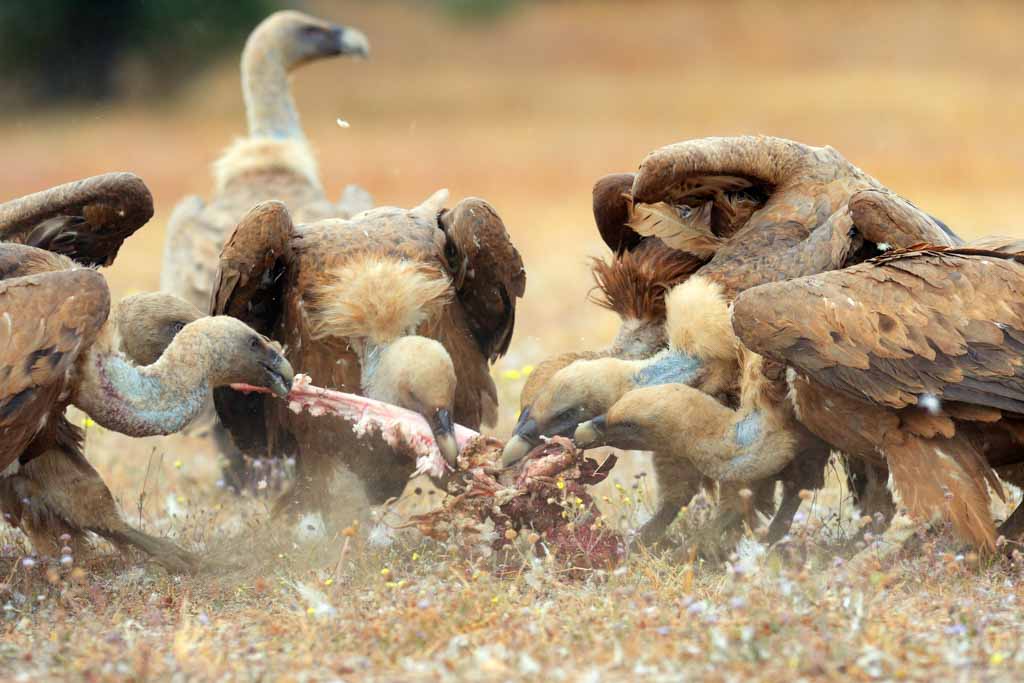
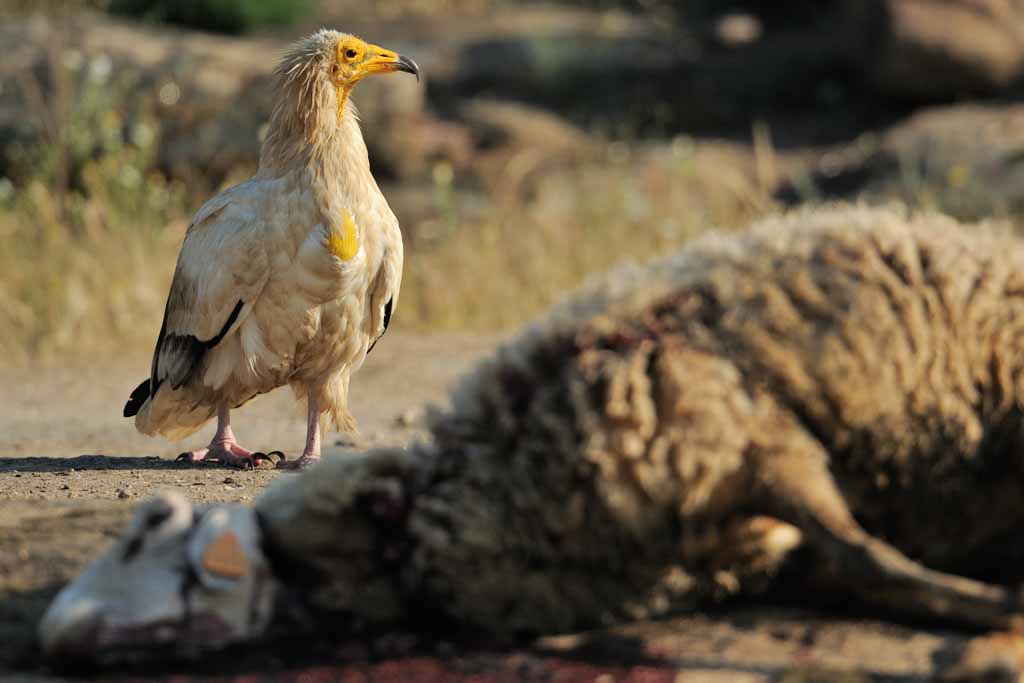
Since the publication of the Conservation Plan for Necrophagous Birds in 2019, Portuguese farmers have been allowed to leave carcasses on their land if they receive a licence from ICNF and DGAV. However, obtaining these licenses is a long and bureaucratic process, with the Rewilding Portugal team working to support farmers in the application process. So far the team has submitted three license requests without reply from the authorities, which effectively means the practice of carcass removal continues.
To better support the birds, the Rewilding Portugal team have also increased their knowledge of the feeding habits of griffon vultures through GPS tagging. Preliminary results have shown these birds rarely using local feeding stations, instead preferring to cross the border into Spain and feed in areas of dehesa forest with high densities of extensive livestock production. GPS tagging has also revealed that the birds are often feeding on illegally dumped carcasses in Portugal, performing their role as nature’s clean-up crew. However, carcasses are sometimes dumped in areas which are hard for the vultures to reach.
“In line with EU legislation, it makes perfect sense for the Portuguese government to legalise something that is already happening illegally,” says Deli Saavedra. “This is better for farmers and better for vultures and other scavengers. The most efficient and ecologically friendly way to dispose of carcasses it to simply let vultures do the job.”
“The most efficient and ecologically friendly way to dispose of carcasses it to simply let vultures do the job.”
A similar situation exists in the Central Apennines rewilding area in Italy, where GPS tracked vultures have been found feeding on illegally dumped carcasses, while in the Rhodope Mountains the local rewilding team is also speaking with the authorities about the possibility of leaving carcasses in nature.
“Rewilding Europe and local rewilding teams will continue their efforts to lobby authorities until we see a meaningful change in the situation on the ground,” says Saavedra. “We will also continue efforts to track vultures, accumulate information on where they are feeding, and demonstrate the logic of legalising something that is already happening illegally on a widespread basis.”
Many members of Rewilding Europe’s burgeoning European Rewilding Network are also working to restore the Circle of Life, with 35 now involved in the restoration of wild and semi-wild herbivore populations across Europe. This includes everything from the reintroduction of European bison in the Veluwe in the Netherlands to the reintroduction of Konik horses in the Beremytske Nature Reserve in Ukraine.
These reintroductions are increasing the availability of carrion, as a result of herbivore predation by carnivores such as wolves, and through natural death. Rewilding Europe is facilitating the reintroduction of many of these herbivores through “loans” made by our European Wildlife Bank.
Besides the collaborating with ARK Nature, Rewilding Europe signed a memorandum of understanding with the Vulture Conservation Foundation (VCF) in 2020, which will enhance essential support for European vulture conservation and rewilding. Today the VCF is involved in many large-scale European vulture conservation projects, from Portugal and Spain to the Alps, and throughout the Balkans to Greece and Cyprus.
Rewilding Europe has also been working with Spanish NGO GREFA (Group for the Rehabilitation of Native Fauna and its Habitat) on its upcoming reintroduction of cinereous vultures in the Rhodope Mountains, which is set to take place in 2022. Through its Monachus Project, GREFA has been working to reintroduce cinereous vultures in the La Demanda Mountains of northeast Spain since 2016 – with 10 breeding pairs established in the area to date – as well as in the Pyrenees, where more than 25 pairs now breed.
At Rewilding Europe we want to show that rewilding can generate new business opportunities, jobs and income. By building this “business case for the wild”, we can provide new opportunities for rural economies – which are often associated with declining economic productivity, rural depopulation and land abandonment.
In several rewilding areas, the recovery of iconic scavenging species and the restoration of food webs is providing such opportunities on a growing scale.
Vultures, for example, can be of great value to local communities because they support nature-based tourism, with nature lovers and ornithologists drawn to see these spectacular birds as they nest, feed and take to the sky. This is the case in the Greater Côa Valley rewilding area in northern Portugal, where vultures have played an instrumental role in attracting tourists and sustaining the growth of local nature-based businesses over much of the last decade.
One such business is wildlife tour operator Wildlife Portugal, which received a loan from Rewilding Europe’s enterprise loan facility Rewilding Europe Capital in 2016 to construct birdwatching hides. The company specialises in wildlife watching, nature conservation and education within the Greater Côa Valley, with a primary focus on the Faia Brava Nature Reserve. In addition to the hides, which are perfectly positioned to see the reserve’s vultures, it also offers a range of other activities, including guided hikes, photography tours and 4×4 safaris.
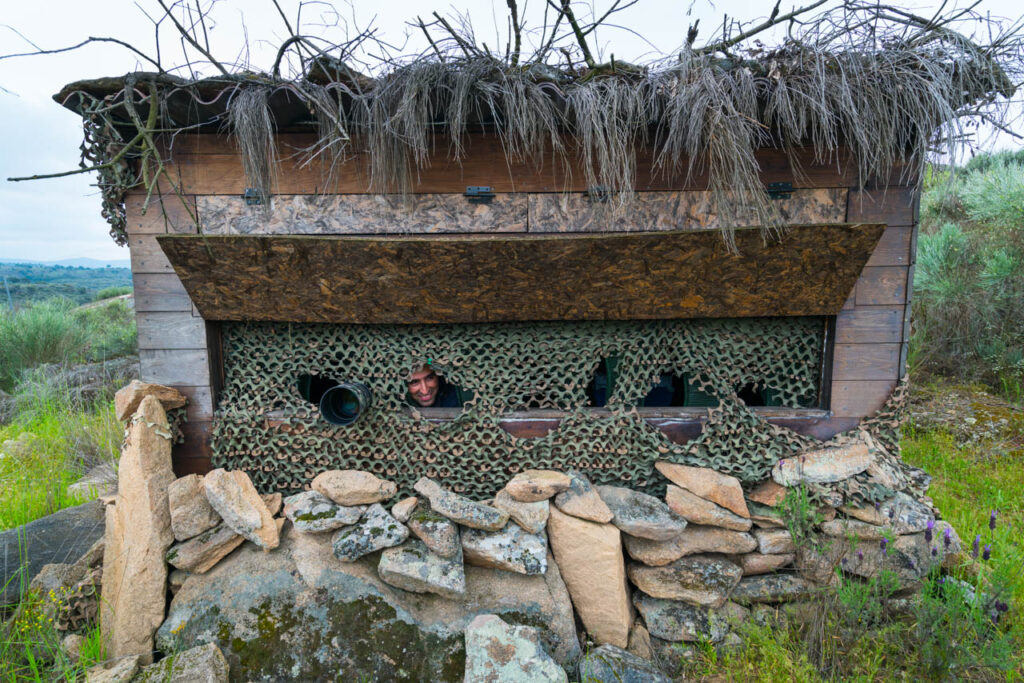
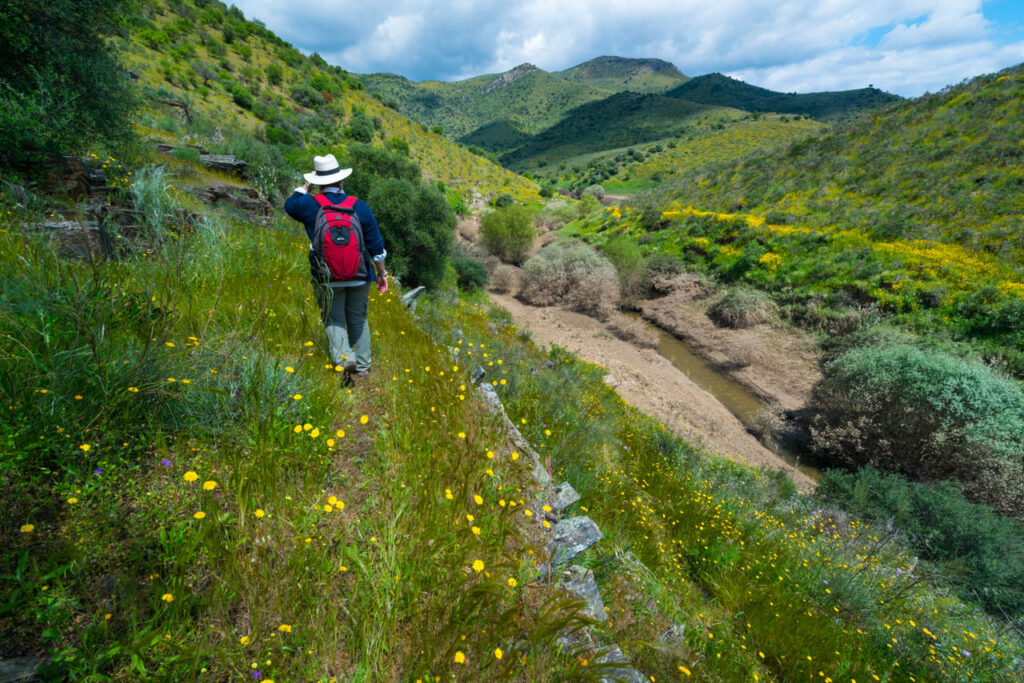
“I decided to start Wildlife Portugal mostly because of the possibility of building a hide for vultures and selling it as a tourism experience,” says Wildlife Portugal founder and executive director Fernando Romão. “My objective was always to diversify this experience with other wildlife, but vultures were the trigger. Most of the programmes I’ve established with tour operators include this experience – it’s a must-do because of its uniqueness in Portugal. Many people in this country, especially those in big cities, aren’t even aware that we have vultures, so it’s a real eye-opener for them to see the birds and see the impact of rewilding.”
Collaboration between Rewilding Portugal and Wildlife Portugal has also seen a growing number of tourists visit the Vale Carapito rewilding site in the Greater Côa Valley since May (when the site officially opened). Here they can observe species such as semi-wild sorraia horses (released in May 2021), griffon vultures, cinereous vultures, booted eagles, roe deer and honey buzzards. As in other rewilding areas, the reintroduction of herbivores is helping to strengthen the Circle of Life by providing naturally available food for the vultures and a range of other scavengers.
In the Rhodope Mountains of Bulgaria – Rewilding Europe’s flagship vulture rewilding area – the ongoing recovery of griffon vultures has also provided new economic opportunities over the last 10 years.
Temenujka Nikolova is the manager of the Vulture Centre in the small town of Madzharovo, in the heart of the rewilding area. The centre, which for the last two years has been open all year round, currently employs four people.
“Nature-based tourism keeps this area alive and provides work for many families.”
“Madzharovo attracts a huge and growing number of tourists who want to get in touch with vultures, and to learn more about what is being done to protect them and support their conservation in the Eastern Rhodopes,” says Nikolova. “The increasing number of guesthouses here is indicative of the development of the business in the region. This makes us very happy. Madzharovo, with a population of about 600 people, can currently accommodate 150 visitors. Nature-based tourism keeps this area alive and provides work for many families.”
The European Safari Company also offers experiences in the Rhodopes which allow visitors to see griffon vultures and other iconic birdlife up close.
Rewilding Europe is working in various ways to support the recovery of vulture populations in our areas, as a flagship species of healthy food chains and functioning ecosystems.